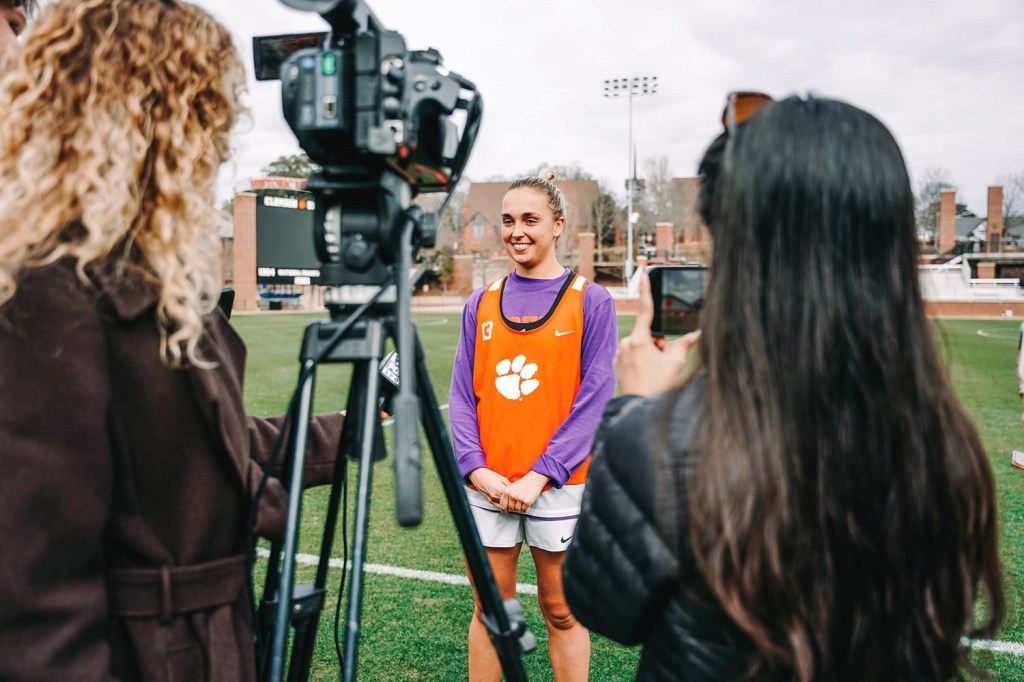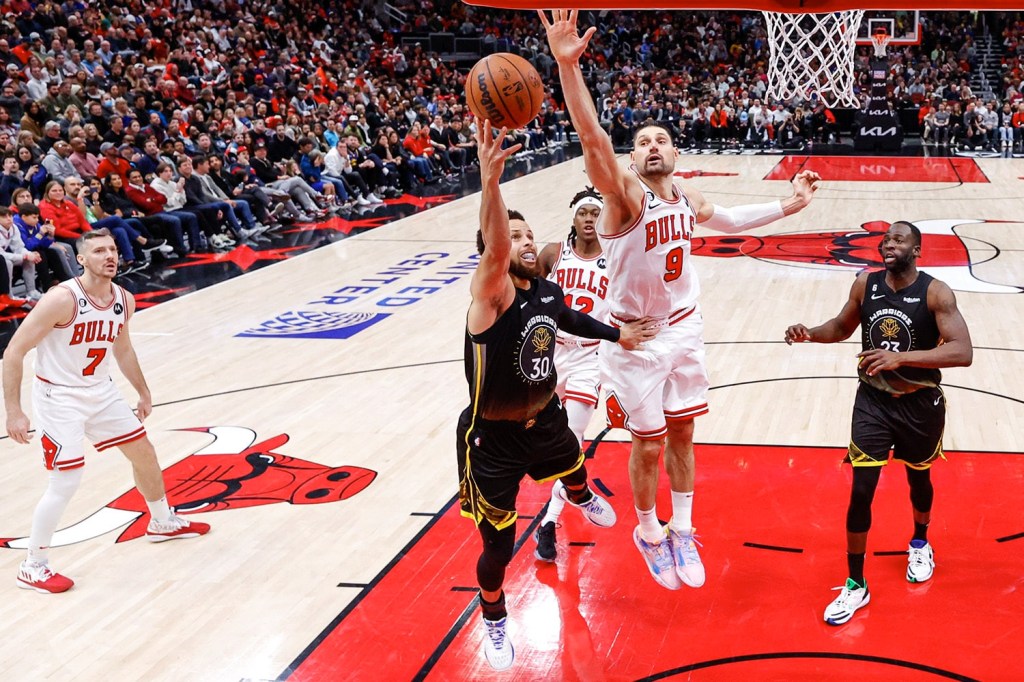In soccer — more than most sports — the ball has a leading role.
In basketball and baseball, changes to the ball are often met with outrage from players and even fans, but in soccer, the ball changes for nearly every big event — and adapts to the rest of the game’s innovations.
“Technology evolves around the game,” Adidas football innovation lead Hannes Schaefke tells Front Office Sports. Since 1970, FIFA has entrusted Adidas to create the official match ball for the men’s World Cup, and in 1999, the German manufacturer began designing balls specifically for the women’s tournament. The two sides have a contract through 2030.
Two decades after it started experimenting with a specialized women’s ball, FIFA found that players at the 2019 Women’s World Cup were covering 15% more average distance and reaching top average speeds 11% faster than they were at the 2015 tournament.
In turn, Adidas designed the 2023 ball — aptly named OCEAUNZ — for speed, giving the company both a marketing opportunity at every game in Australia and New Zealand, as well as a product they could sell for $170.
Adidas wouldn’t disclose how much it costs to produce each ball nor disclose sales numbers, but major soccer retailer Sport Endeavors gives some insight into a fluctuating business (the product is also offered to consumers in $60 and $40 versions).
“When the design of the [men’s] ball is strong, sales are particularly great. When the design has been less desirable, as in 2018, sales were not as strong,” the company’s senior director of merchandising Billy Lalor told FOS. “With the WWC ball, the official balls have not been offered in a broad range in the past, as they are now.
“Adidas designed a very attractive ball for the 2023 WWC… We are confident that we will achieve full sell-through in almost every style of WWC ball by the end of the tournament.”
Strong sales during this World Cup — from the ball, official federation jerseys, and other products — could help Adidas as it battles back from its costly cancellation of the Yeezy brand due to rapper Ye’s antisemitic remarks last year.
The company reported a better-than-expected Q1 in May with $5.82 billion in revenue — a slight 1% dip year-over-year, outperforming expectations from analysts who anticipated a 4% drop.
An attractive ball with minimal controversy surrounding its technical design could do wonders from a marketing and sales perspective.

Global Designs
Adidas designs a new ball for each World Cup incorporating the latest technology and the hosts’ identities. In the process, it has created a culture similar to the one centered on sneakers, where each new edition has a unique design, name, and maybe even a Wikipedia page.
“It developed over time because we believe that we have to create something that feels super-specific, meaningful, and super-iconic for each World Cup,” Adidas’ global category director for football hardware Solène Störmann says.
In 1970, the series began with the humble Telstar, whose classic black-and-white, pentagonal-hexagonal design has become synonymous with soccer balls.
From there, the German company has experimented with different aesthetic and technical designs over the years, with varying degrees of success.
Al Rihla (2022), Telstar 18 (2018), and Brazuca (2014) all fared well in independent lab tests and in stores (with the exception of 2018, as Lalor noted). But in 2010, the controversial Jabulani received huge criticism for its aerodynamics; Schaefke and Störmann gave nervous chuckles when the name was brought up in an interview.
Adidas learned from these successes and failures to create OCEAUNZ, a portmanteau name representing the 2023 hosts — Oceania, Australia, and New Zealand. The company consults with linguistic experts to find a name that’s not only meaningful, but will be an earworm for consumers. “You always try to find a spelling that is a bit unusual because once you can say it and pronounce it, you will just keep it in your memory,” says Störmann.
Aesthetically, Störmann describes the design as “a never-ending wave” inspired by the Indian Ocean, while also drawing from the unique topographies of Australia and New Zealand, which encompass everything from pristine beaches to snow-capped mountains, and the Outback.

Advancing the Ball
Of course, the ball can’t just look good. Adidas experimented with different designs in its labs, ultimately settling on a 20-piece panel makeup with micro and macro textures on its exterior. It tested air resistance at Loughborough University’s wind tunnels in England and with players before finalizing the design.
The company also had to meet FIFA’s Quality Pro standards, which test for criteria like rebound and loss of air pressure.
But the crucial innovation lies in its ball-tracking capabilities. Following the 2018 Men’s World Cup, FIFA began pushing for new technology to improve the speed and accuracy of goal and offside calls.
It led to a collaboration between Adidas and German sports analytics company Kinexon, which developed a 500Hz inertial measurement unit motion sensor that interacts with a local positioning system installed at each World Cup venue. The real-time data generated from the system aids video assistant referees.
The technology was first used at the 2022 Men’s World Cup in Qatar and is making its Women’s World Cup debut this year.
“The game of football had in place a bit of a barrier in terms of technology,” Schaefke says, noting that camera technology previously used for VAR was good but imperfect. “To think back a couple of years, it would have been almost unimaginable to enhance a ball to the degree that you can put technology inside that can track to a resolution of 500Hz.”
“We see ball-tracking as the final piece of the puzzle of live data collection,” says Kinexon co-founder and managing director Maximilian Schmidt. “With live ball-tracking, the entire action on the pitch can be digitized and enhance football analytics for new insights and automated event detection.”
But even for $170, consumers won’t get their hands on this technology.
Authentic OCEAUNZ balls sold on the market are exactly the same as the ones on the World Cup fields — minus the ball-tracking.





![[US, Mexico & Canada customers only] Dec 5, 2025; Washington, District of Columbia, USA; United States of America President Donald Trump, FIFA President Gianni Infantino and Canada Prime Minister Mark Carney watch from the stands during the FIFA World Cup 2026 Final Draw at John F. Kennedy Center for the Performing Arts.](https://frontofficesports.com/wp-content/uploads/2025/12/USATSI_27745262_168416386_lowres-scaled.jpg?quality=100&w=1024)














